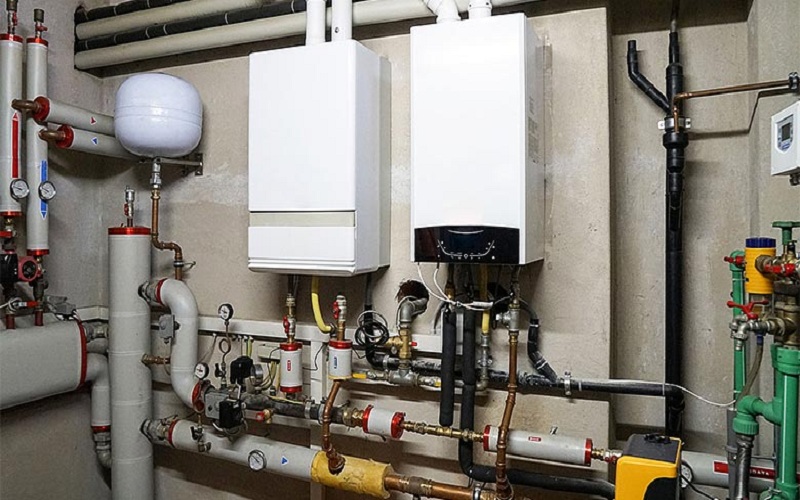A boiler is crucial for home or commercial comfort, providing warmth and supporting daily activities. Installing a new boiler, driven by efficiency needs or unit replacement, is significant. This article simplifies the boiler installation steps, from selection to maintenance, for a confident approach to this essential task.
Choosing the Right Boiler
Selecting the most suitable boiler for your property is a critical decision that impacts not only the efficiency of your heating system but also your comfort and utility bills. The choice between combi, conventional, and system boilers depends on several factors, including the size of your property, your water usage habits, and the available space for installation.
For smaller properties with limited space and lower water demand, combi boilers are often the ideal choice, providing hot water on demand without the need for a separate cylinder. In contrast, larger homes with multiple bathrooms may benefit from the higher capacity of conventional or system boilers, which use a separate cylinder to store hot water, ensuring a steady supply even during peak times.
Preparing for Installation
Before the actual boiler installation, preparation is key to ensuring a smooth process. The initial step involves a visit from a Gas Safe registered engineer to your property for an inspection and heating survey. This crucial visit allows the engineer to assess the specifics of your space, including the layout, the number of rooms and bathrooms, and the existing heating system. They will also evaluate potential locations for the new boiler and determine if additional pipework is necessary.
During this visit, the engineer will discuss your preferences and requirements, offering tailored advice based on their findings. This conversation ensures that you are well-informed about the options available, helping you make a decision that best suits your needs. By the end of this preparatory stage, you will have agreed on the most suitable boiler model, its placement, and the installation costs, setting a solid foundation for the installation day.
The Installation Process
The boiler installation process is a meticulous procedure that begins with the removal of your old boiler. This involves safely disconnecting it from the gas and water supply to ensure a seamless transition to the new system. Following this, the installation of the new boiler commences, a process that varies in duration depending on the complexity of the job. Simple replacements, such as swapping an old combi boiler for a new one of the same type, can be completed within a few hours. More complex installations, requiring extensive pipework adjustments or drilling, may extend from two to five days.
A crucial step in preparing for the new boiler is the cleaning of your central heating system. This is achieved through either a chemical flush or a more thorough power flush, which removes debris and ensures the efficiency of your heating system. The engineer will then proceed to adjust or reconfigure the pipework to optimise the boiler’s performance and minimise heat loss.
The installation process also includes fitting necessary accessories, such as system filters or filling loops, to enhance the functionality and longevity of the boiler. Throughout this process, the engineer ensures that your property is protected, using carpet protectors and dust sheets to maintain cleanliness.
Homeowners are advised to be present at the start of the installation to grant access and discuss any final details. However, it’s not necessary to stay throughout the entire process. Once the installation is complete, the engineer will conduct a final check to ensure everything is functioning correctly, marking the end of the installation phase.
Testing and Final Steps
Post-installation, the boiler undergoes thorough testing for efficient and safe operation. The engineer checks for leaks and correct gas pressure, then demonstrates boiler operation, safety precautions, and addresses queries. This tutorial ensures you’re well-equipped to manage the new boiler.
Registration and Maintenance
Final steps include registering the boiler with Gas Safe and local authorities, complying with Building Regulations. You’ll receive a Building Regulations Certificate, confirming installation legitimacy. Annual servicing by a Gas Safe engineer is crucial for maintaining efficiency and extending the boiler’s lifespan, preventing costly repairs and ensuring optimal operation.
Summing Up the Path to a New Boiler
Understanding the boiler installation process demystifies it from selection to completion. The right boiler choice, proper installation, and regular maintenance are key to home warmth and comfort. Professional installation by a Gas Safe registered engineer ensures safety and efficiency, while regular maintenance guarantees the boiler’s longevity. This approach ensures a smooth transition to a more efficient, safe, and comfortable environment.

